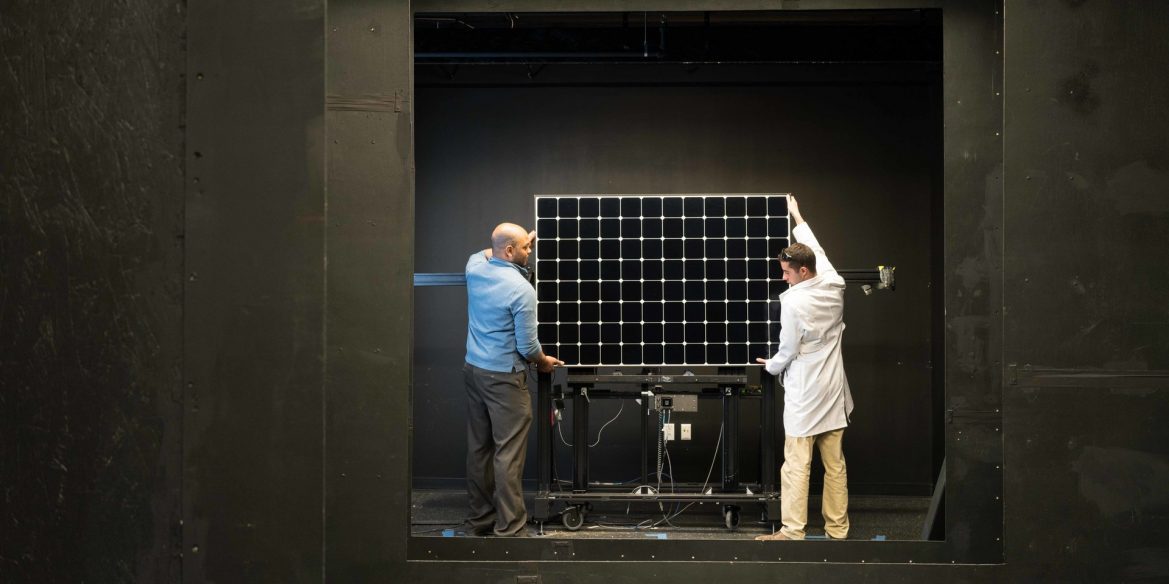As we’re in the midst of an evolution in solar panel technology with efficiencies pushing toward and past 20% for the masses – and on the cusp of revolutions – it is fitting to look forward at how these revolutionary technologies might find a path into the current, ultra-competitive marketplace.
Researchers from Arizona State University’s Fulton Schools of Engineering did this with a futuristic – but probable – 32% perovskite+silicon tandem solar module. In Techno-economic viability of silicon-based tandem photovoltaic modules in the United States the group then compared the potential pricing of this product to the projected market prices of the best-priced silicon modules in 2020 to determine if these newer, lower-production rate and higher-priced products could first compete and then gain market share.
We note that a large cost benefit will not necessarily be needed to prefer tandem systems over single-junction systems, because higher efficiencies bring additional perceived benefits such as reduced installation area. It is, however, necessary that the path leading to such a tandem be continuously profitable.
Assistant Research Professor Zhengshan J. Yu , Graduate Student Joe V. Carpenter and Assistant Professor Zachary Holman determined that a perovskite+silicon tandem solar module – with a similar lifetime and long term productivity of standard silicon panels – could in fact compete in the most cost competitive residential market with a price as low as (roughly) 69¢ per watt in 2020. A key factor used to determine this pricing viability is a broad balance of system analysis – noting that less roof space, less wiring, less labor, is needed to get the same output with higher wattage modules.

The above image describes the windows in which these higher priced panels could fit. The left section, noted “Si”, is the standard projected solar panel pricing in 2020 – about 23¢/W. The right section notes the “top cell” that will be added to the silicon module – in the form of a perovskite layer. For the 1.7 eV residential, 0.9 coupling example, an additional ~46¢/W is added (roughly $42m-2 equals 23¢/W).
The authors suggested that a mature technology, similarly to modern silicon modules, will be in the 0.9 coupling efficiency range (making use of 90% of the theoretical electricity generation potential). Additionally, the paper notes that 1.5 eV or 1.7 eV modules are most likely to be competitive in the market.

The paper goes deeper into how the various pricing levels were chosen (above), what potential technologies were viable, what the probable pricing levels in 2020 would be, how the balance of system would be affected by almost doubling the efficiency of the panel, and further.
Many everyday installation companies will laugh at the idea of an economy installation using the 23¢/W solar modules, as most U.S. buyers tend toward premium efficiency and aesthetic products that cost far in excess of 69¢/W today. This could mean that a solar module with this level efficiency far above the 69¢/W price would have a place in the marketplace. And even though this niche is smaller due to higher cost, these modules would have customers even today.
This content is protected by copyright and may not be reused. If you want to cooperate with us and would like to reuse some of our content, please contact: editors@pv-magazine.com.









By submitting this form you agree to pv magazine using your data for the purposes of publishing your comment.
Your personal data will only be disclosed or otherwise transmitted to third parties for the purposes of spam filtering or if this is necessary for technical maintenance of the website. Any other transfer to third parties will not take place unless this is justified on the basis of applicable data protection regulations or if pv magazine is legally obliged to do so.
You may revoke this consent at any time with effect for the future, in which case your personal data will be deleted immediately. Otherwise, your data will be deleted if pv magazine has processed your request or the purpose of data storage is fulfilled.
Further information on data privacy can be found in our Data Protection Policy.